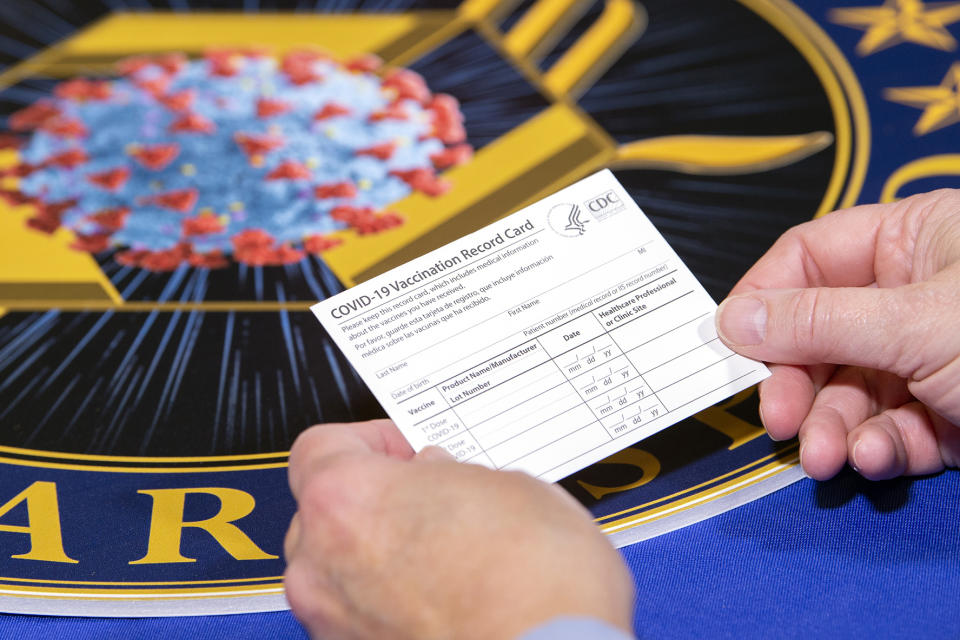Here's how the COVID-19 vaccines will be tracked and distributed, expert says
With the approval of two COVID-19 vaccines looming, the U.S. government has begun releasing information about how they will be distributed — and, perhaps more important, tracked. The Food and Drug Administration reportedly plans to meet about the first vaccine candidate, made by Pfizer and BioNTech, on Dec. 10, and the second, made by Moderna, on Dec. 17.
The two vaccines have proved more than 90 percent effective in phase III clinical trials and are expected to be approved within days of the meetings. If all goes according to plan, health care personnel and nursing home residents — both of whom have been deemed the top priority for vaccination by the Centers for Disease Control and Prevention — may be receiving them as soon as the third week in December.
The process of vaccinating this group, and the remaining hundreds of millions of Americans, will be no easy feat. Both vaccines rely on messenger RNA, a new technology that’s believed to be safer than other vaccine types but requires two doses. The doses of Pfizer’s vaccine must be received 21 days apart; Moderna’s must be spaced 28 days apart. In order to help Americans keep track, the Department of Defense will issue “vaccine record cards,” to record which type of vaccine was received and when.

But that’s not the only plan to assist in safely vaccinating Americans. To help explain the process, Yahoo Life spoke with Dr. Carolyn B. Bridges, associate director for adult immunization at the Immunization Action Coalition, a nonprofit that works in partnership with the CDC to educate medical professionals and the general public about vaccines. Here’s what you need to know.
Vaccine record cards are not a new concept and should be considered a backup
“Shot cards have been around for decades,” says Bridges. “So this is kind of your low-tech way to keep track of your immunizations.” The cards, which the DOD released an image of this week, will come as part of a kit that each institution offering vaccinations will hand out. Bridges recommends taking a picture of the card as well as storing it in your wallet — but notes that it’s intended principally as a safeguard.
“People who are agreeing to be COVID-19 vaccine providers will be entering information into their state or city jurisdiction’s immunization information system or vaccine registry,” she says. “So there will also be an electronic record — and of course if you’re getting it at your doctor’s office or your pharmacy, they’ll also be in your medical record. But sometimes electronic systems go down, and it’s really nice to have a backup written piece of information that the patient can keep track of as well.”
The CDC will also offer an after-vaccination health checker and reminder called V-SAFE
Bridges says providers will be required to report any serious side effects, but the CDC also plans to give Americans the option of reporting any adverse effects from the vaccine through a text-based app called V-SAFE. “It’s an additional system that will be available to the public and people who get vaccinated to participate in,” says Bridges. “They’ll not only be assessing how you are feeling and monitoring side effects, but sending out reminders of when it is time for the second dose.”
On its website, the CDC describes V-SAFE as “a new smartphone-based, after-vaccination health checker for people who receive COVID-19 vaccines,” adding that it will consist of web surveys and text messages to check in on vaccine recipients. Live follow-up phone calls will be held with anyone experiencing major side effects, and a report will be filed through the Vaccine Adverse Event Reporting System (VAERS). V-SAFE will be an important way to trace the safety of the vaccine, for which long-term data is not available.
The cards will be part of a larger kit sent to providers, which will include pharmacists
On its website, the DOD says the vaccine record cards will be just one part of a larger kit sent to providers, one that includes syringes, needles, alcohol pads and masks. Bridges says the number of each product will correspond with how many vaccines the institution is planning to give out.
Although she admits that distributing the COVID-19 vaccine at such a large scale will be difficult, she says both nurses and pharmacists are prepared. “Immunizations are a routine part of our medical system and something pharmacists do all year round,” says Bridges. “So there’s a lot of experience and knowledge about what needs to happen to have a successful immunization program.”
For the latest coronavirus news and updates, follow along at https://news.yahoo.com/coronavirus. According to experts, people over 60 and those who are immunocompromised continue to be the most at risk. If you have questions, please reference the CDC’s and WHO’s resource guides.
How to maintain your physical and mental health during the pandemic
Taking care of a loved one with COVID-19? Here’s how to stay healthy
Q&A with Dr. Kavita Patel: How to keep your family safe and maintain your mental health
For the latest coronavirus news and updates, follow along at https://news.yahoo.com/coronavirus.
Read more from Yahoo Life
Who will get the COVID-19 vaccine first? CDC names 2 highest-risk groups
Moderna vaccine suggests COVID-19 may be easily 'vaccinatable'
Want lifestyle and wellness news delivered to your inbox? Sign up here for Yahoo Life’s newsletter.



